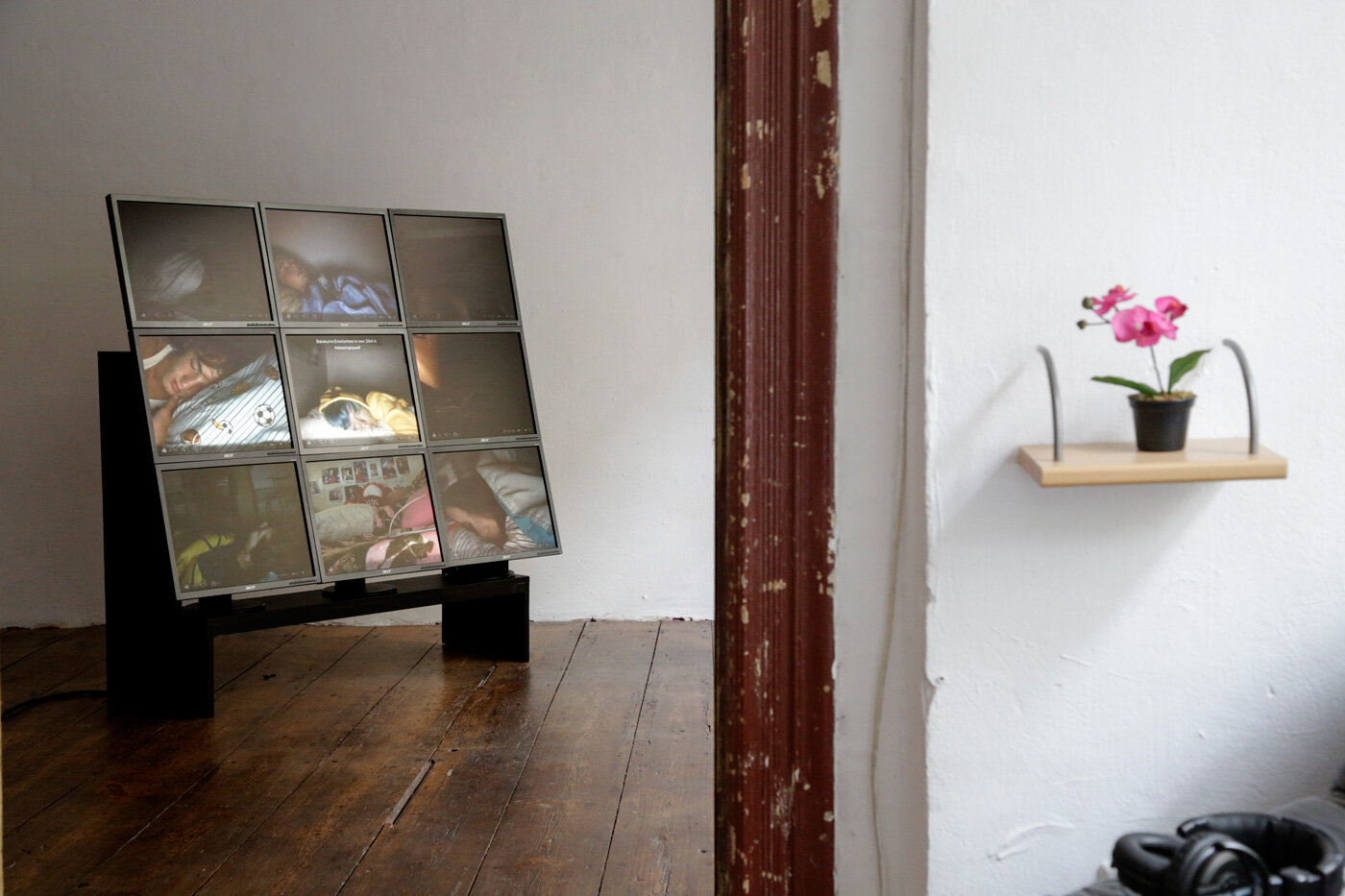COLLIDING HUMANS. Social Interaction on the Internet
Artists: Jonas Blume, Manja Ebert, Aron Lesnik, Lauren Moffatt
Exhibition Film COLLIDING HUMANS
Curators: Tina Sauerlaender and Peggy Schoenegge (peer to space)
Duration: September 27 to October 6, 2019
Artist Talk: October 2, 2019, 7 pm (with curator Peggy Schoenegge and the artists Jonas Blume, Manja Ebert and Aron Lesnik)
At: Raum für drastische Maßnahmen, Oderstraße 34, 10247 Berlin,
Jonas Blume, Rhythm Zero Los Santos, 2019, video still © the artist
Organized by medienkunst e.V. – Verein für zeitgenössische Kunst mit neuen Medien
"Good relationships make us happier and healthier." That is the conclusion of two Harvard studies that spent 75 years researching with over 600 people what makes people really happy. But what happens to our relationships when we communicate mostly over the Internet?
Manja Ebert, sleepingsquad, 2016 © the artist
Online communication bridges physical distances and connects us. We can easily send messages across continents and get an answer within a few seconds. However, the physical vis-à-vis is missing. The other's body, facial expressions and gestures are no longer part of interpersonal exchange. We are alone with the screen while interacting socially. Like a mirror, the screen echoes us back at ourselves. We share our space only with our own view of the world, while that of others remains out of sight. This one-sided perception can lead to a loss of empathy and – in the end – to disrespectful, hateful comments. As soon as we publish personal information on the Internet, we are exposed to the scrutiny of others, and on the other hand we are free to scrutinize in return.
The works presented in the exhibition deal with various forms of social interaction on the Internet. Users stream themselves asleep and let others like them. Avatars in video games expose themselves to the violence of fellow players in virtual space. Hate speakers flee into isolation and let their frustration run free online. Others create a world populated by specially designed avatars.
Aron Lesnik, Isolation, 2018, video still © the artist
The exhibited works offer an insight into our behaviour on the Internet. We do not hesitate to share our most intimate moments or take violent action against the avatars of other players. We shut ourselves away and lead our lives in online communities. The new alternatives for communication change the way we behave socially, morally and ethically, and they transform our togetherness. The large-scale Harvard studies suggest the conditions for happiness and health exist in good relationships. It is up to us to figure out which forms of communication and relationships help us to find happiness in the digital age. In our emotional wellbeing as individuals lies the key to our capacity for empathic togetherness.
Jonas Blume places the fate of his avatar in the hands of his digital opponents in the online game Grand Theft Auto in the work Rhythm Zero Los Santos. The avatars controlled by real players maltreat him with various props such as golf clubs, knives, crowbars and pistols. Here, the virtual space becomes a dangerous territory that condemns everyone to play an active role in order to survive.
Lauren Moffatt, The Tulpamancer, 2019, immersive video installation, © the artist
Manja Ebert dedicates her work sleepingsquad to a section on the online portal younow.com, on which the users stream themselves live while sleeping. With this intimate form of self-portrayal, they consciously expose themselves to the situation of being at the mercy of the reactions of others while asleep. The viewers inside can comment, like and donate money for the sleeping persons.
Aron Lesnik takes on the role of a misogynous hate speaker, who roams around in his apartment alone. His work ISOLATION allegorizes imprisonment in one's own world and the inability to enter into relationships with other people, especially with women. The distance to others leads to hate comments, which are posted online and shared in corresponding communities.
Lauren Moffatt examines the online community of tulpamancers, of which she herself is a part. Tulpamancers create tulpae and give them their own virtual form and identity, sometimes on social platforms. Similar to imaginary friends, they maintain relationships with them. They believe that the tulpae have their own consciousness and cannot be completely controlled by their host. They express the tulpamancer's desire for an emphatic companion.
The participating artists are members of medienkunst e.V.
The exhibition is a cooperation between Raum für drastische Maßnahmen, peer to space, and medienkunst e.V..
Cidre by OBC.













